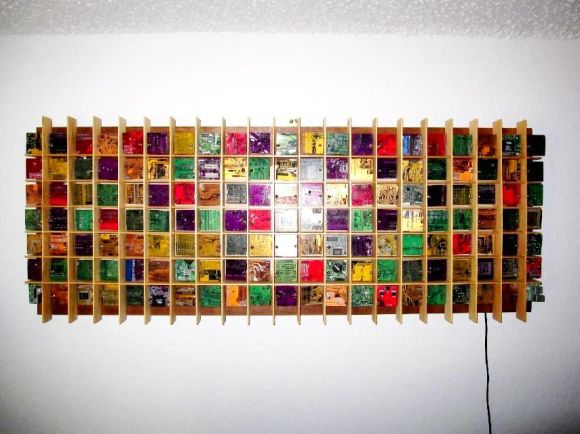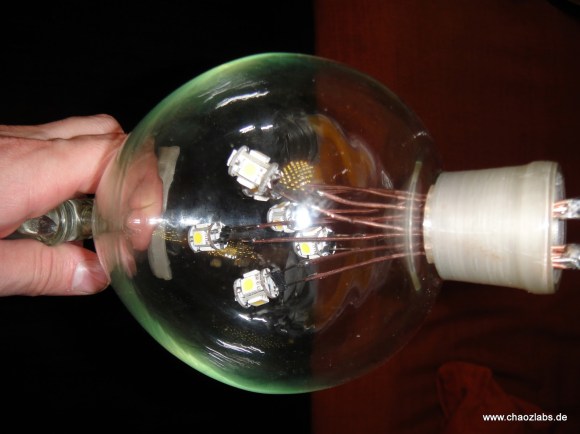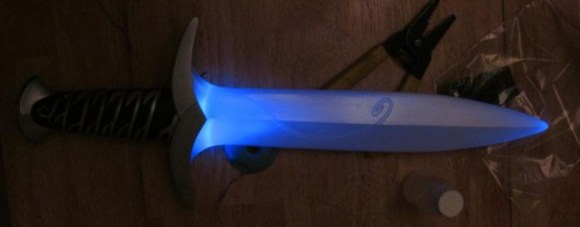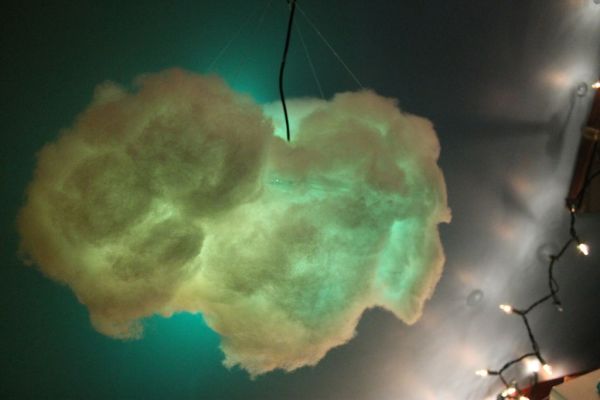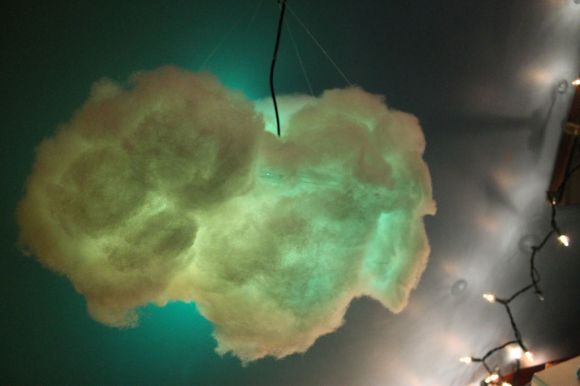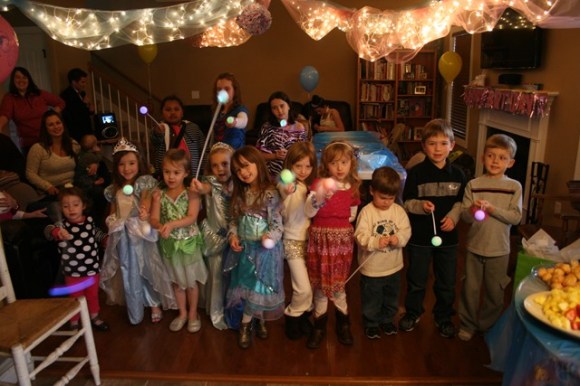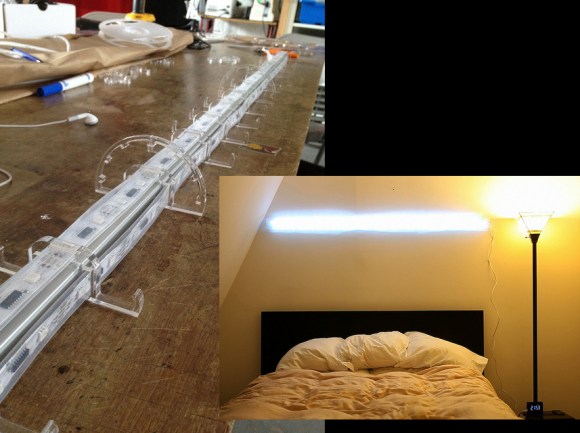
This sunrise alarm clock was made in a bit different form factor than we normally see. Instead of a box next to the bed it’s a bar above the headboard which slowly illuminates every morning. This was [Holly’s] first electronics project. She spent pretty much all summer working on it and accumulated a skill set that included designing for and operating the laser cutter and assembling and programming the electronics.
She didn’t start from square one. The hardware and programming were greatly simplified by the availability of RGB LED strips and the Monochron clock which drives them. [Holly] altered the code to bring up a blueish hue over a 35-minute time period. Since this will be used to wake her at 5:30am she was also obliged to include some backup sounds just in case. But after the project was finished and mounted she forgot to turn them on and was pleasantly surprised that the lights woke her up on time. The mounting bracket seen above uses t-slot rail with laser cut brackets to hold the half-cylinder shade for the sconce. The final product looks fantastic!

